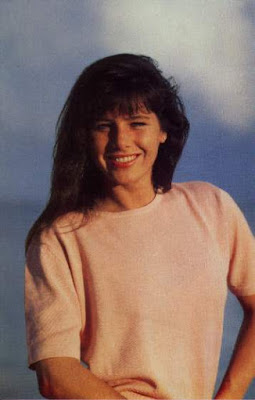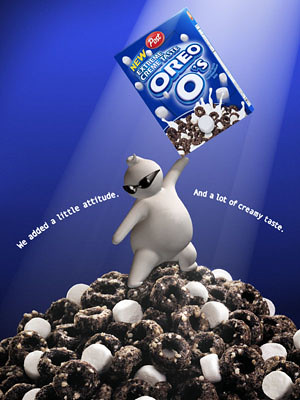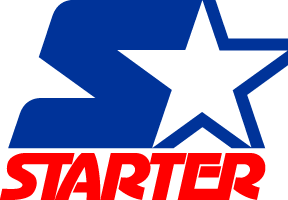
There was once a time when children's networks didn't feel they needed to dumb down their shows for a preteen audience. Unlike the Disney and Nickelodeon networks of today, classic Nickelodeon created teen-centric sitcoms that were funny and well-realized. Hey Dude was a classic example of this vein of solid comedic children's programming: it didn't rely on wacky gags or outlandish premises to drive its action. Rather, it took a simple believable premise and extrapolated from it a show worthy of our attention and admiration.
This admiration was fairly easily bought. After all, here was a group of teenagers doing what every kid dreamed of: spending a summer away from home, having a peer group of other attractive teens, and spending endless hours riding horses. It was sort of like an extended version of the Saved by the Bell summer beach specials, only it was set at a dude ranch. Essentially, the show took familiar character molds, placed them in an unfamiliar situation, and watched the humor unfold.
The show's underlying plot was fairly uncomplicated. Mr. Ernst, a nerdy but lovable New York ex-accountant and newly ex-husbanded, bought an Arizona dude ranch on a whim in the midst of a midlife crisis. Much to his son's chagrin, Mr. Ernst packed up and headed west with a humorously limited knowledge of dude ranching, whatever that is. His ranch, the Bar None, was staffed by a motley crew of teenagers assembled from across the country. Apparently, the ranch had once been owned by a reputable cowboy, and the staff was in for a hefty surprise upon the arrival of bumbling newcomer Mr. Ernst.
If that was not quite enough to draw you in, well, Nickelodeon had plans for all of you naysayers. This plan came in the form of one of the catchiest television theme songs to date. I dare you to listen to it and not spend the rest of the day replaying it in your head. Go ahead, give it a try:
What can I say, I warned you. If you're reading this incognito at work and would likely blow your cover with an impromptu outburst of loud western kid's TV show theme music, here are the convenient read-along lyrics for your perusing pleasure:
"It's a little wild and a little strange...
when you make your home out on the range.
So, start your horse and come along.
'Cause you can't get a ride if you can't hold on.
Singin' yippee kai aie ay. (Yippee kai aie what?)
Like the cowboys say. (Sing it again now.)
Yippee kai aie ay.
'Till the break of day.
(You'd better watch out for those man-eating jackrabbits... And that killer cacti!)
Hey Dude!"
Under closer inspection, this song tells us absolutely nothing of value. Sure, it's vaguely Western-themed (largely evidenced by that "yippee kai aie ay") but the lyrics themselves tell us no story whatsoever. What man-eating jackrabbits? What killer cacti? Perhaps it would take a bit more investment in the show to rope you in (yes, that is a lasso joke, please take it as such).
Luckily, we had a wide range (I'm going to keep pointing out these puns, don't even try to stop me) of characters with whom to relate:
 Ted: Our protagonist for no real reason other than his general egotistical frat-boy amiability coupled with a lack of other defining qualities. Well, outside of his rather remarkable good looks, that is. He was the real glue of the show, and his premature departure from the cast was an inevitable shark-jump. Luckily, he later returned to the ranch under shaky (read: ratings related) pretenses, but it was never quite the same.
Ted: Our protagonist for no real reason other than his general egotistical frat-boy amiability coupled with a lack of other defining qualities. Well, outside of his rather remarkable good looks, that is. He was the real glue of the show, and his premature departure from the cast was an inevitable shark-jump. Luckily, he later returned to the ranch under shaky (read: ratings related) pretenses, but it was never quite the same.In case that was somewhat lacking on the descriptive side, you can always refer to the following Ted testimonials:
 Bradley: Hold on, back up here. Brad's a girl? But that's a boy's name! Just when you think you've heard it all. Don't worry, though, she's totally rich and we can therefore assume she can buy her way out of an ill-begotten fate of name mockery. See, you can tell she's rich because she wears designer clothes...at a ranch! Boy, this Brad sure is something. Luckily for Brad, she was a pretty stellar horse trainer, or else we would really have no clue what she was doing here. Additionally, her love-hate relationship with Ted just screamed playground flirtation:
Bradley: Hold on, back up here. Brad's a girl? But that's a boy's name! Just when you think you've heard it all. Don't worry, though, she's totally rich and we can therefore assume she can buy her way out of an ill-begotten fate of name mockery. See, you can tell she's rich because she wears designer clothes...at a ranch! Boy, this Brad sure is something. Luckily for Brad, she was a pretty stellar horse trainer, or else we would really have no clue what she was doing here. Additionally, her love-hate relationship with Ted just screamed playground flirtation: Melody: Requisite goody-goody with all-American good looks (read: blonde). Sure, we may now know Christine Taylor as a relatively well-known actress and wife of Ben Stiller, but back then she was just our favorite 90s lifeguard this side of Baywatch. Melody also had a good deal of sexual tension with Ted, though none of us as children would have defined it as such.
Melody: Requisite goody-goody with all-American good looks (read: blonde). Sure, we may now know Christine Taylor as a relatively well-known actress and wife of Ben Stiller, but back then she was just our favorite 90s lifeguard this side of Baywatch. Melody also had a good deal of sexual tension with Ted, though none of us as children would have defined it as such. Danny: Our small dose of diversity in this snowy white cast. I'm not sure if any of you have ever been to Tucson, but I can give you a hint that the show's ethnic balance is more than a little off. Danny is a Hopi Indian, which we know not only by his looks but also because his last name is Lightfoot. That's subtlety for you. Danny was always full of little tidbits of Hopi wisdom, because the 90s couldn't have a token non-white cast member without tying the major thrust of his character traits to his race.
Danny: Our small dose of diversity in this snowy white cast. I'm not sure if any of you have ever been to Tucson, but I can give you a hint that the show's ethnic balance is more than a little off. Danny is a Hopi Indian, which we know not only by his looks but also because his last name is Lightfoot. That's subtlety for you. Danny was always full of little tidbits of Hopi wisdom, because the 90s couldn't have a token non-white cast member without tying the major thrust of his character traits to his race.In addition, there was Buddy (Mr. Ernst's young teenage son) who was mainly preoccupied with the undesirable skateboarding conditions of the desert. He was largely one-dimensional, but served as a sort of little brother character to the senior staff.
Later, a mysterious Jake, and later an even vaguer Kyle (quasi-related to ranch hand Lucy) were basically stand-ins for the Ted character after his exit from the show. They may very well have come from central casting for Teds, and served as the cousin Olivers in this unfortunate jumping of the shark. Ted's return was welcomed, but the show was already somewhat on the wane.
Regardless of any cracks in its sturdy foundation, Hey Dude ran a fairly solid few seasons from the late 80s to early 90s. Though it wasn't necessarily the sharpest or the most original, it was a little wild and a little strange, which in this case was enough to rope in a slew of little buckaroo viewers.
Check it out:
Hey Dude Episode Guide
Hey Dude Book on Amazon
Hey Dude on iTunes?










